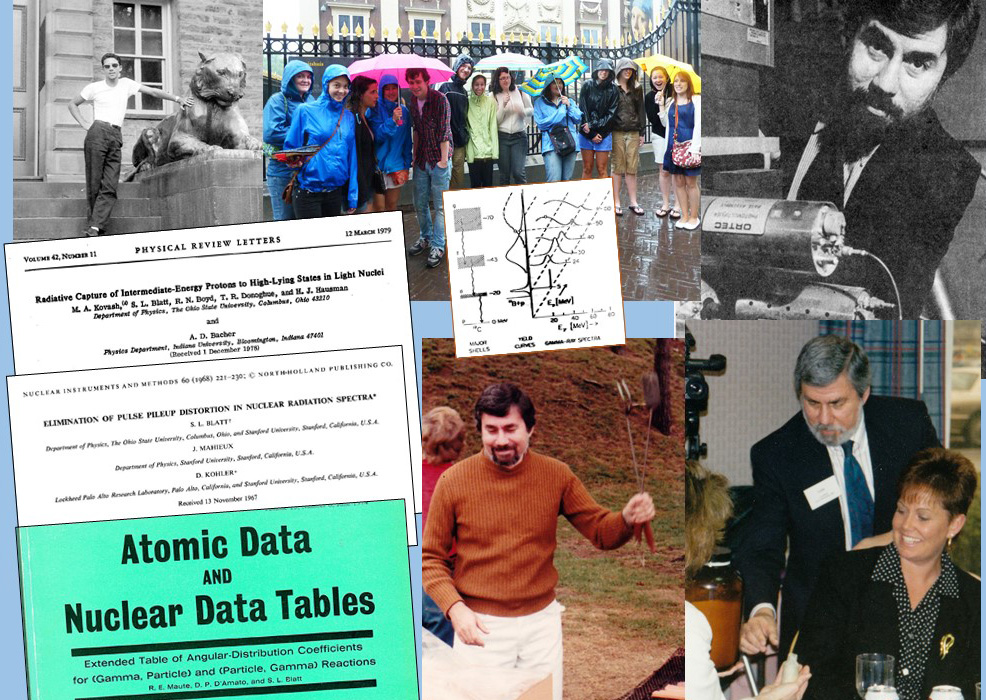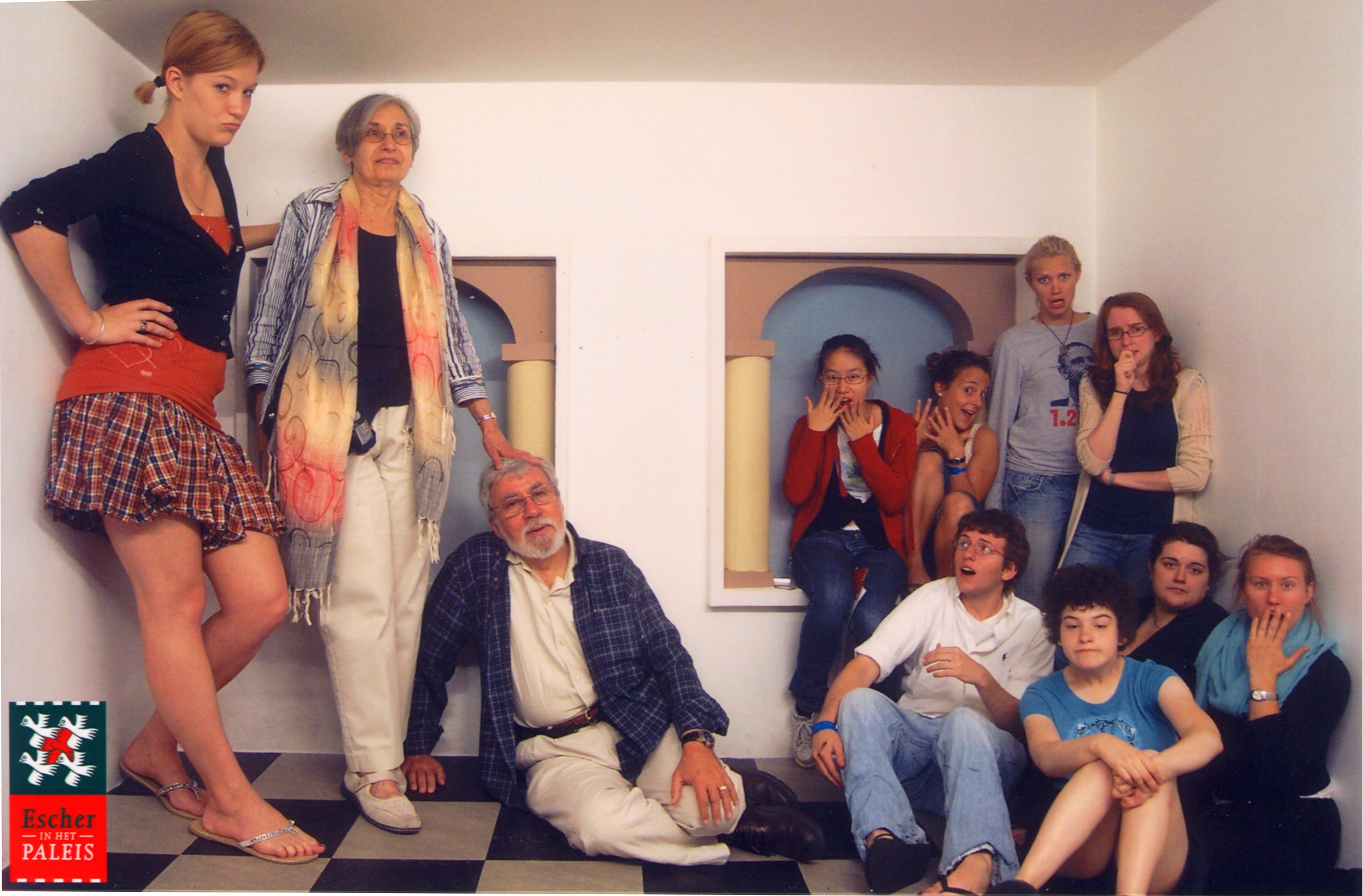S. Leslie Blatt
Professor Emeritus of Physics and Education
Office: 228 Physics/Math Building - e-mail: lblatt@clarku.edu - (508)793-7169

Les Blatt is an experimental nuclear physicist who has contributed to the study of intermediate-energy gamma radiation from the capture of protons and cluster projectiles by light nuclei, and to the study of reactions of astrophysical interest. He and his students were among the first to systematically study the radiative capture of He-3 particles in light nuclei. His pioneering work in proton capture reactios at intermediate energies led to the observation of a “second-harmonic giant resonance” built on highly-excited states in carbon-12, as well as strong suggestions of the existence of a “third-harmonic” resonance. Some of the techniques he developed for this research form the basis of gamma-ray detector systems found in laboratories around the world, and are crucial ingredients in a rapid-response system for measuring the amount of sulfur in bulk coal, developed in collaboration with the U.S. Bureau of Mines. In recent years, his work has been directed toward the needs of pre-service and in-service teachers, and, more particularly, the development of methods and materials for making science more accessible to pre-college students at all levels.
Education and positions
He received his A.B. from Princeton University and his M.S. and Ph.D. degrees from Stanford University. He joined the Clark faculty in 1987 as Dean of Graduate Studies and Research, after many years at The Ohio State University, including six years as Physics Department chair. He recently retired after holding a joint appointment in the Clark Physics and Education Departments, including serving two separate terms as Physics Department chair. See his curriculum vitae for more information.
Courses
Courses he has helped to create at Clark include Discovering Physics, a hands-on, laboratory-oriented course for non-science majors developed in collaboration with Clark physicist Harvey Gould and retired science teacher and demonstration development expert Mauri Gould; Ways of Knowing in the Physical and Natural Sciences, co-developed and co-taught with Marion Guerra (former science coordinator and principal at the Goddard School of Science and Technology, an elementary school in the Clark neighborhood) and with Clark Education Department colleague Sarah Michaels; Science and Society, originally developed and taught jointly with former Education Department member James Gee, and later taught as a First-Year Seminar; and Energy and the Campus, developed jointly with physics colleague Chris Hohenemser, co-founder of the Clark Environmental Science and Policy program. Much of his recent course development efforts have been devoted to interdisciplinary courses, including Seeing the Light: At the Crossroads of Art and Science, which was offered for the first time in the University’s 2005 “May Term” in Luxembourg (a collaborative program with the Holy Cross College), and, in updated form, again for the 2007, 2009, and 2011 May Terms. He also regularly taught the Physics Department’s popular astronomy courses, Exploring the Universe and The Planets and Space Exploration, and has returned from time to time to teach additional semesters of astronomy for Clark students.

Experimenting with perspective at the M. C. Escher Museum in Den Haag, May Term 2009.
In recent years, he has also taught courses for the WISE program (Worcester Institute for Senior Education) at Assumption College, including an abbreviated version of Seeing the Light in 2013 and a course on important intersections of science and music, called The Sounds of Music, in 2014. He offered a course in cosmology, The Universe: A 13.7 Billion-Year History, in 2015. In 2016: Truth or Consequences: The Willful Abandonment of Science, as well as a reprise of Seeing the Light. His 2017 offerings were Einstein’s Century: Modern Science and Modern Culture, and Genesis, Geology, and Genomes: How We Got Here.
For the winter 2018 WISE program, his topic was “Energy: Sine qua non,” which outlined our current use (and misuse) of the most-available energy sources, the gradual depletion of the non-renewables among them, and the long-predicted global damages that are now actually starting to impinge on our lives. In autumn of 2018, the course topic is “The Music of Sounds,” a follow-up on the 2014 course, focusing on how composers use some of the physically-set features of musical sounds (such as overtones) to provide the listener with, for example, particular expectations and tensions, and then either fulfill or subvert those expectations, later releasing or further tightening the tensions.
For winter, 2018, he is preparing a course on “The Mysterious Quantum,” which will approach the very successful but often misunderstood world of Quantum Physics in ways that allow non-specialists to recognize both the “weirdness” of what the theory seems to imply and the deep realities of nature implicit in the theory that are still being investigated and grappled with by modern-day physicists.
Work with teachers
Les and his Clark colleagues and students have long been involved in the design, organization, and presentation of a variety of science education study-team programs, workshops, and summer institutes in collaboration with teachers in the Worcester Public Schools. All of these programs emphasize a hands-on/minds-on approach to learning, modeled on the way science actually works. He has been active on state-wide committees for the development of public-school science frameworks and the teacher-education requirements necessary for the implementation of those frameworks.
Updated October 30, 2018.